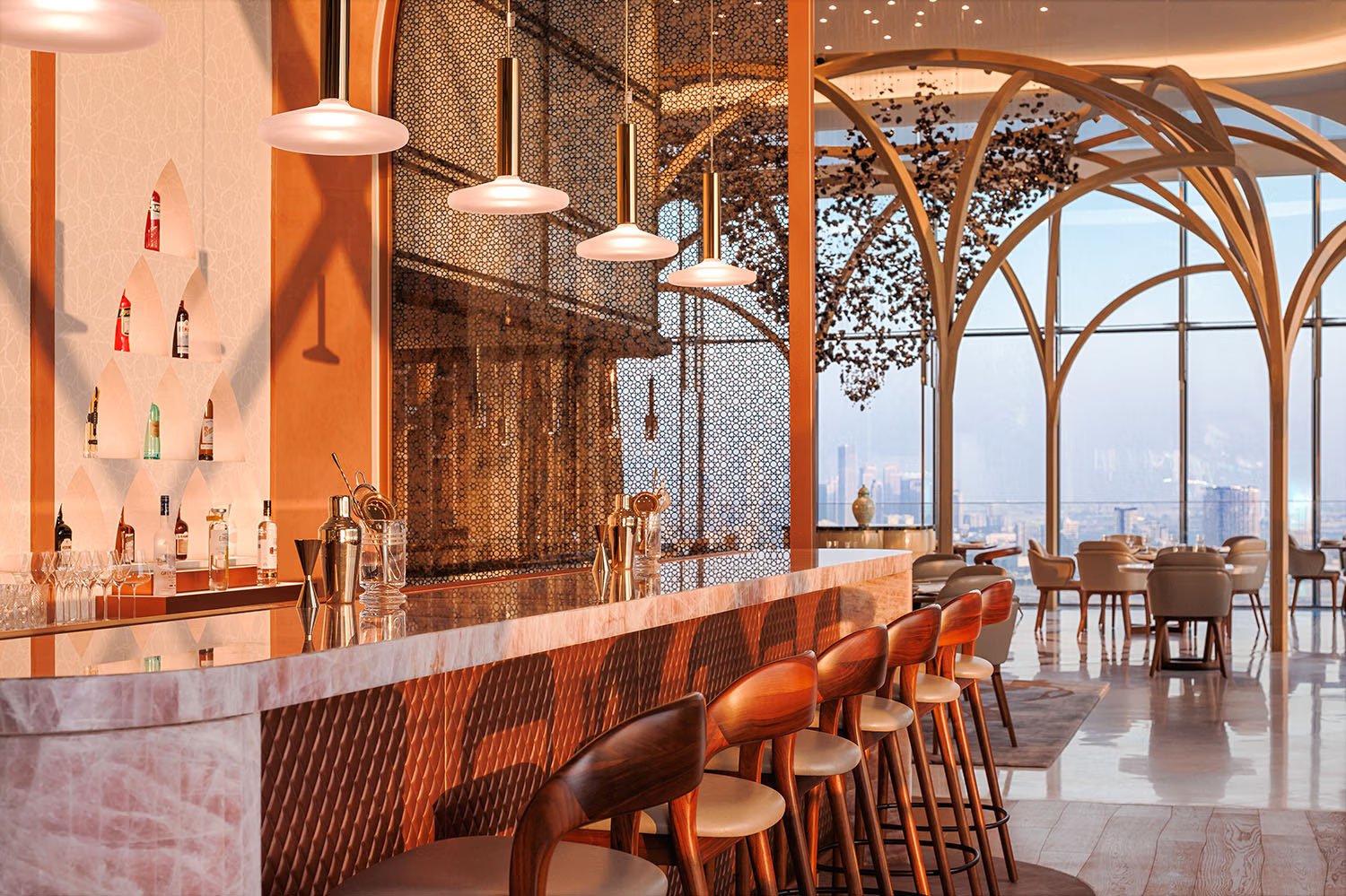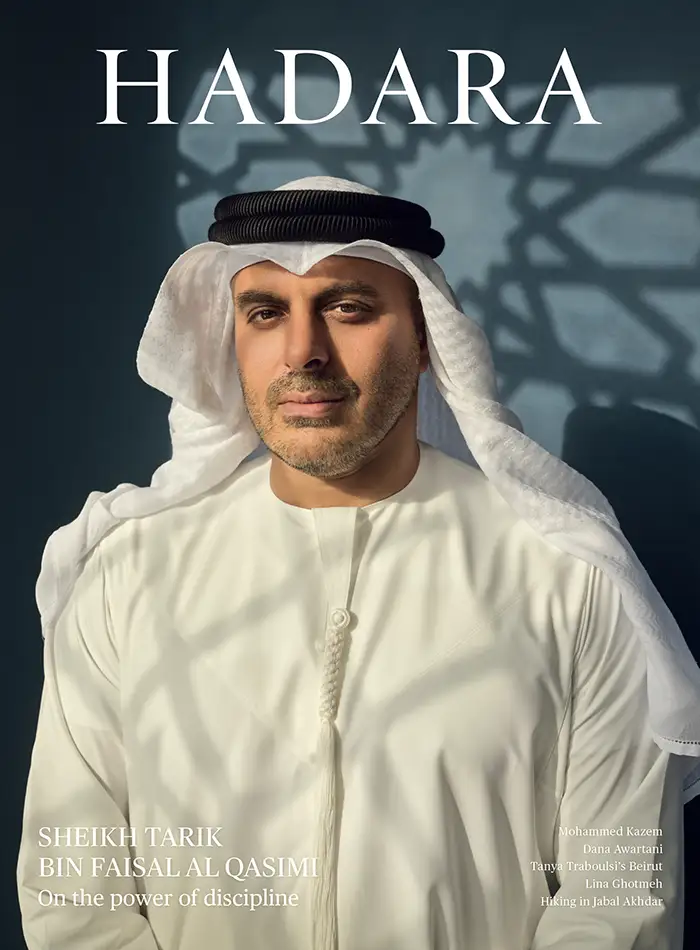Culinary time travel
A Spanish chef brings an ancient cuisine to an ultra-modern city.
By Nicola Chilton
Dining at Qabu, suspended 100 metres above the ground in a shimmering cantilever at Dubai’s new One&Only One Za’abeel hotel, is like taking a journey through time. While the location may be ultra-modern, the cuisine delves deep into the past—almost 1,000 years back to the Iberian Peninsula’s Al-Andalus era.
The chef behind this time-travelling experience is Paco Morales, whose restaurant Noor, in his hometown of Córdoba in southern Spain, has been awarded three Michelin stars for its dishes inspired by the Andalusian Caliphate of Abd al-Rahman III. It’s an ambitious and esoteric concept, not an obvious starting point for a fine-dining restaurant. But along with executive chef Paola Gualandi, Morales is digging into the past and a forgotten culinary heritage.
Morales’s culinary career has taken him from his family’s chicken shop to cooking alongside legendary chefs like Andoni Luis Aduriz and Ferran Adrià, who called him “one of the most exciting chefs in the world”. In 2010, he received his first Michelin star at Restaurante Paco Morales in Bocairent, near Valencia. But it was upon returning to Córdoba that he discovered his passion for uncovering the history of his hometown, leading to the opening of Noor in 2016. “When I started Noor, I was working with historians and researchers from the academic world, and this gave us our secret ingredient,” he says. “Knowledge.”
It’s this depth of knowledge that makes the cuisine at Noor, and at recently opened Qabu, so seductive. But for Morales, the experience goes much further than what’s on the plate.
“You don’t come to Qabu only for the food,” he says. “That’s just one piece in the puzzle. The strength of Qabu is that all the pieces complement each other, and we try to have harmony in everything. Our battle is not to be the best restaurant in Dubai for its cuisine, but to be the best restaurant also from a historical and cultural [perspective].”
Venues in the notoriously overcrowded Dubai restaurant scene compete for a demanding audience with an impressive array of entertainment. Not so at Qabu. “We don’t need special effects, loud music and smoke to impress,” Morales says. “It’s about creating honest cuisine in an honest restaurant.”
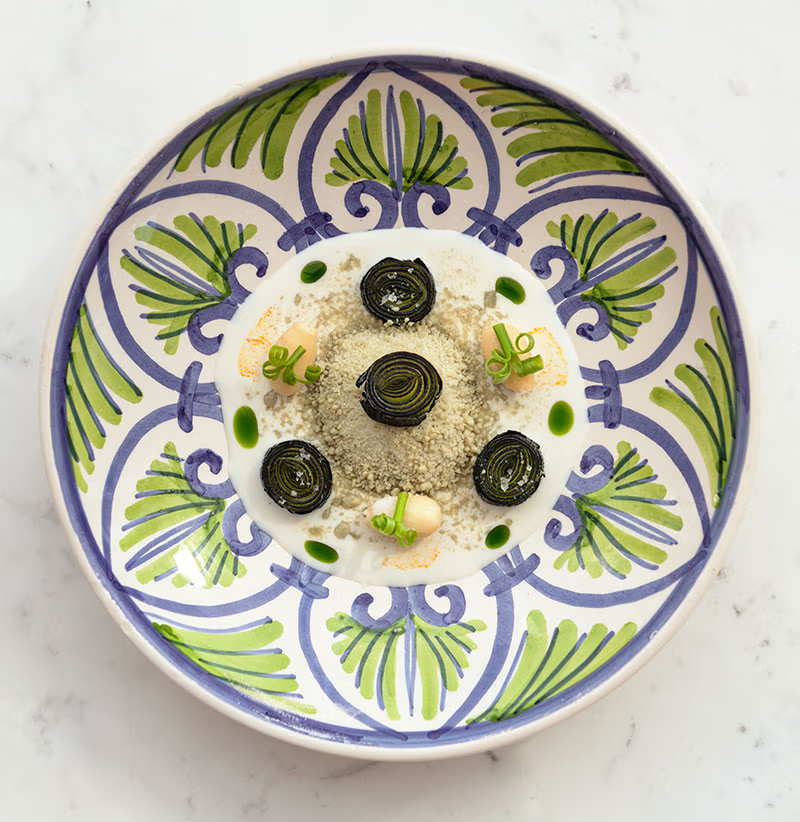
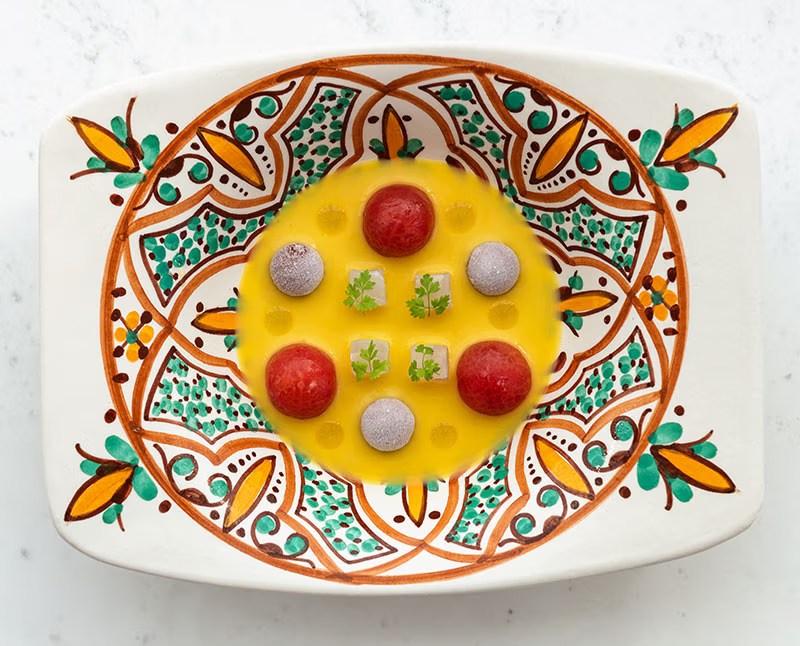
Top, Almond cured burnt leek snow with mole negro; above, mandarin gelée with escabeche, cherry tomatoes and cured sea bass is a standout dish for Morales. It highlights citrus, introduced to Spain via the Silk Road, and tomatoes—and their use in escabeche—from the New World.
In Qabu, the culinary experience plays with history. Its roots are in the 8th to the 15th centuries when Al-Andalus was flourishing and significantly impacting the region’s arts, sciences, architecture, language—and food. There is an emphasis on ingredients that were available in Iberia before the voyages to the New World, but there are some that came later, too. It’s not a strictly chronological journey, but it is a journey of enlightenment.
One major source of inspiration for Morales is an anonymous 13th century manuscript, La Cocina Hispano-Magrebí Durante La Epoca Almohade, translated by the Spanish historian and Arabist Ambrosio Huici Miranda. The book contains more than 500 recipes, culinary and medicinal, many of which are the origin of popular Spanish dishes today. “I’m not bringing exact ancient recipes to the present day because the ingredients and people’s tastes are different now, but they serve as inspiration for me,” he says.
When I dine at Qabu, I’m as transfixed by what I’m eating as I am by the explanation of each dish from the serving team, and the depth of knowledge that they bring to the table. They tell me about the origin of the ingredients, their flavour profiles, and how they compare to what we are more familiar with today, like the carob used in a chocolatey dessert that contains not a trace of cocoa. It is, without doubt, one of the best meals I’ve had in Dubai. The setting may be extraordinary—breathtaking skyline views, contemporary nods to Andalusian design and delicate geometrics—but it’s the food that surprises me with every bite. Flavours like pomegranate water, Jerez vinegar, date honey, and turmeric cream merge into the harmony that Morales holds so dear.
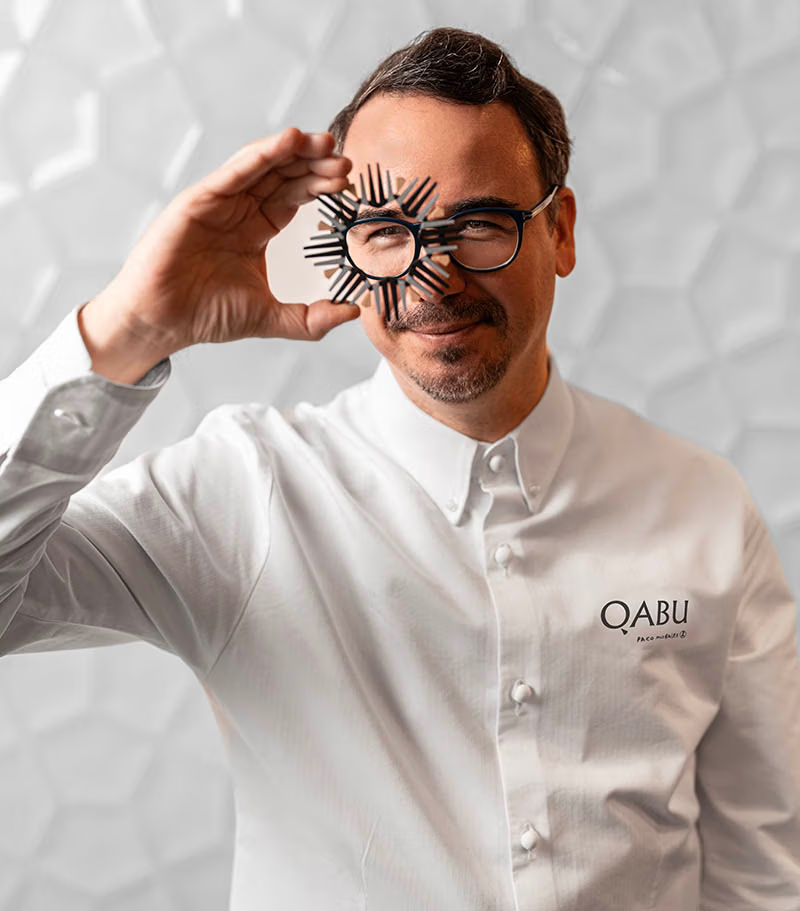
Morales tells me that three dishes on the Qabu menu stand out for him. The mandarin gelée with escabeche, cherry tomato and cured sea bass highlights citrus that was introduced to Spain via the Silk Road. Contact with the Americas led to the introduction of the tomato and its use in escabeche, and this dish is a nod to what would eventually become known as ceviche.
From Noor, Morales brings an iconic dish—the pistachio karim with smoked herring caviar, green apple and black bread crumble. It’s presented as a rich, green paste smeared in a circle on the plate with a flavour that is completely unexpected. “We treat the pistachio as if it were hummus,” Morales says. “Karim means generous one, and it’s a delicate and friendly dish with smoky tones from the herring caviar, making it something unique.”
For a taste of nostalgia, Morales points to the intriguingly named fake mint sponge cake with orange blossom sorbet and clove infusion. “This dish reminds me of my roots, my childhood and my family,” he says. “Our neighbourhood is full of blooming orange trees, and we harvest them one by one in the season. Together with the mint and the clove and pepper soup, it makes for an immensely flavoured pre-dessert.”
Qabu has only been open for a few months, and Morales describes the restaurant as still in its infancy. “In some ways Qabu is an evolution of Noor, and I think that’s beautiful,” he says. “It’s like Noor’s child, and while it already has a distinct identity, day by day it’s discovering its own personality.”
Photographs from top: Rupert Peace; food by neil corder; portrait by Maxime casa

